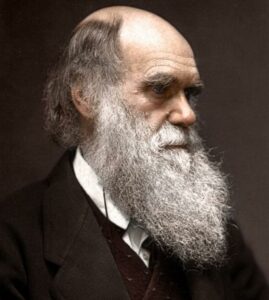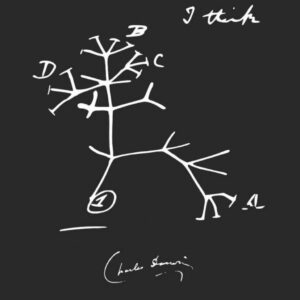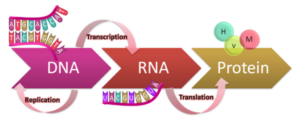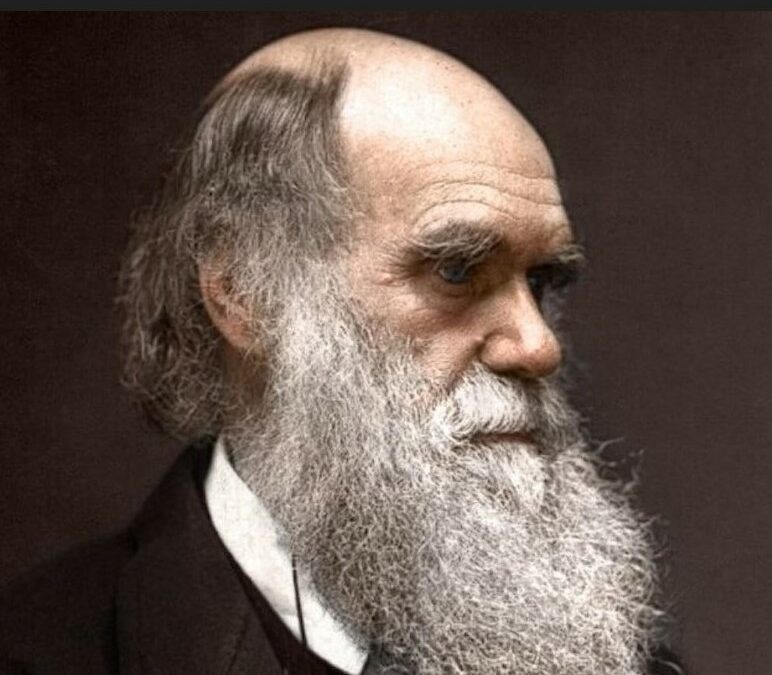In his 1859 book The Origin of Species, Charles Darwin theorized the naturalistic mechanism of natural selection to explain the variations in biology. However, his famous tree of life had yet to have a definitive root. In other words, he did not address the emergence of the first life from which nature started its selection. Hence, Darwin’s theory of evolution only tells us how and why existing life changes, but not how the first life was formed. Somehow, Darwin maneuvered from nonliving matter to the last universal common ancestor (LUCA) without explanation. LUCA is a conceptual (imaginary beginning of Darwin’s Tree of Life pictured below).

Darwin’s best attempt at an explanation is found in a private letter to his naturalist friend Joseph Hooker, which revealed that Darwin’s theory of evolution presupposed abiogenesis over a long period. In his February 1871 letter to Hooker, Darwin speculated:
It is often said that all the conditions for the first production of a living organism are now present, which could ever have been present. But if (and oh what a big if) we could conceive in some warm little pond with all sorts of ammonia and phosphoric salts, light, heat, electricity etc. present, that a protein compound was chemically formed, ready to undergo still more complex changes, at the present day such matter [would] be instantly devoured, or absorbed, which would not have been the case before living creatures were formed.[1]
Abiogenesis, in evolutionary terms, is the notion that primitive life originated from nonliving matter over billions of years. This idea suggests a chemical pathway from nonliving to less-elaborate primordial life forms to complex life. The naturalistic presumption depicted in Darwin’s Tree of Life is that abiogenesis gave rise to simple cells, which later evolved into complex cells starting from the last universal common ancestor LUCA (1).

The Biomolecular Paradox
This blog will address one of the problems with abiogenesis. If abiogenesis is ever possible, it will be faced with the chicken and egg paradox between RNA, proteins, DNA, and lipids. Darwin imagined that life began with a chemically formed protein and propounded his theory when the internal workings of living cells were largely unknown. It was not until 1902 that scientists understood that proteins are chains of amino acids.[2] However, many contemporary scientists hold that primitive life may have been in the form of Ribonucleic Acid (RNA)-based. They argue that since RNA could serve as both genetic material and catalyst, the RNA pathway better explains the origin of life.[3]
Despite which origin of life pathways is correct, the question of which component came first remains because DNA, proteins, RNA, and lipids form an intricate synergistic system that can clearly be explained in a design scenario but remains inexplicable in naturalistic terms.[4] DNA is the bearer of the genetic code, and one type of RNA is a temporary messenger (mRNA) that shuttles a copy of the code from the DNA to its protein-making machinery—ribosomes. RNA molecules are involved in protein synthesis, while protein is a large molecule composed of one or more long chains of amino acids in a specific sequence. The order of amino acids in the chain is determined by the base sequence of nucleotides in the gene that codes for the protein.

Many researchers, says Fry, have been seeking to answer the question, “How, then, did the first proteins emerge without nucleic acids, or alternatively, how were nucleic acids first synthesized, and how could they replicate without proteins?”[5] Several theories have been proposed to answer this chicken-and-egg paradox and have come short of a consensus. Hence the Origin of Life is one of the biggest unsolved mysteries in science because there is no evidence to support the idea that life first emerged by purely chemical or natural means. However, this functional interdependence is analogous to a designed mechanical system. The multiple layers of similarity attest to this fact and point to a purposeful assembly—a design.
In addition to this dilemma, Origin-of-life theorists Stanley Miller and Jeffrey Bada independently conclude that the polymerization of amino acids into peptides is unfavorable in liquid water at all temperatures. They assert that it is challenging to produce proteins (or other polymers like RNA) in the primordial soup or underwater near a hydrothermal vent because water breaks protein chains of monomers back down into amino acids.[6] Hence, according to NCBI, “Though the organization of inanimate matter into living cells with genetics can be charted in mathematical terms, the biochemical details remain elusive.”[7]
Therefore, according to Walter L. Bradley and Casey Luskin, the conundrum of the first life is fundamentally tied to the mystery of how RNA, DNA, and proteins formed and congregated within a cell with a barrier made of lipids as a self-replicating system.[8] Living systems are so intricately optimized that the notion of Intelligent design best explains the specified genetic information necessary to produce the first living cell and account for the specified, digitally encoded information in DNA and RNA.
[1] Darwin Correspondence Project, “Letter no. 7471,” accessed on 25 June 2023, https://www.darwinproject.ac.uk/letter/?docId=letters/DCP-LETT-7471.xml.
[2] Michael Marshall, “Charles Darwin’s hunch about early life was probably right,” BBC Future, November 2020, https://bit.ly/3JvbojT. Accessed June 25, 2023.
[3] Biology Online Editors, “Spontaneous Generation,” Biology Online Dictionary, https://bit.ly/3PpipGW. Accessed June 25, 2023.
[4] Iris Fry, Emergence of Life on Earth: A Historical and Scientific Overview, (New York: Rutgers University Press, 2000), 135-136.
[5] Iris Fry, 135-136
[6] Dembski, William A.; Luskin, Casey; Holden, Joseph M.. The Comprehensive Guide to Science and Faith: Exploring the Ultimate Questions About Life and the Cosmos (p. 273). Harvest House Publishers. Kindle Edition.
[7] Weiss MC, Preiner M, Xavier JC, Zimorski V, Martin WF. The last universal common ancestor between ancient Earth chemistry and the onset of genetics. PLoS Genet. 2018 Aug 16;14(8):e1007518. doi: 10.1371/journal.pgen.1007518. PMID: 30114187; PMCID: PMC6095482. Accessed June 25, 2023.
[8] Dembski, 270.

